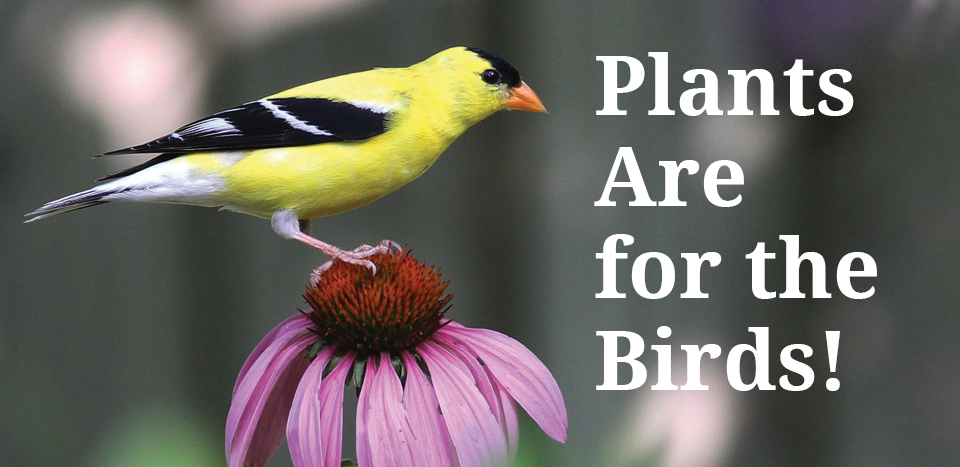
Audubon Adventures

Getting Started with
Plants Are for the Birds
- Read the Background for Teachers essay. It contains more in-depth information that will help you answer questions and guide students’ exploration.
- Familiarize yourself with the For Kids content for “Plants Are for the Birds!”
- Review the classroom- and field-based hands-on activities in Teacher-Led Activities and choose the ones suited to your curricular needs and classroom circumstances.
- Introduce the topic with a discussion. Here are some suggested discussion starters:
- What kinds of things do wild birds eat? Do all wild birds eat the same kinds of food?
- Why do you wild birds need trees and other plants?
- What is a caterpillar? What do caterpillars change into as they grow? What do caterpillars eat?
- What is a weed?
- What do you think it means to say that a plant is “native”? What is a “nonnative” plant? Why do you think it’s important to have plenty of native plants in a habitat?
- What can people do to provide healthy habitat for wild birds?
- Review these vocabulary words or have students define them as they discover them in context in the “Plants Are for the Birds!” student magazine.
aphid
beneficial
bird of prey
caterpillar
characteristic
cycle
desert
ecosystem
evolvedfield guide
food chain
habitat
insect
invasive
native
nonnative
pest
predator
prey
roost
species
survive
thrive
waterfowl
weed
wetland
wildlife
- Definitions for all vocabulary words can be found in the online Naturalist’s Glossary.
- With the whole class or in small groups, review the student magazine, “Plants Are for the Birds!”, and other student content that you’ve incorporated into your teaching or that students have explored on their own.
- Do the hands-on activities you’ve selected, and follow up with review and discussion.
- Download the Assessment questions and answer key to use as a tool for evaluating students’ learning with “Plants Are for the Birds!”
- Extend learning with print, online, and video resources found in the Naturalist’s Bibliography.
Photo: Sean Graesser.




